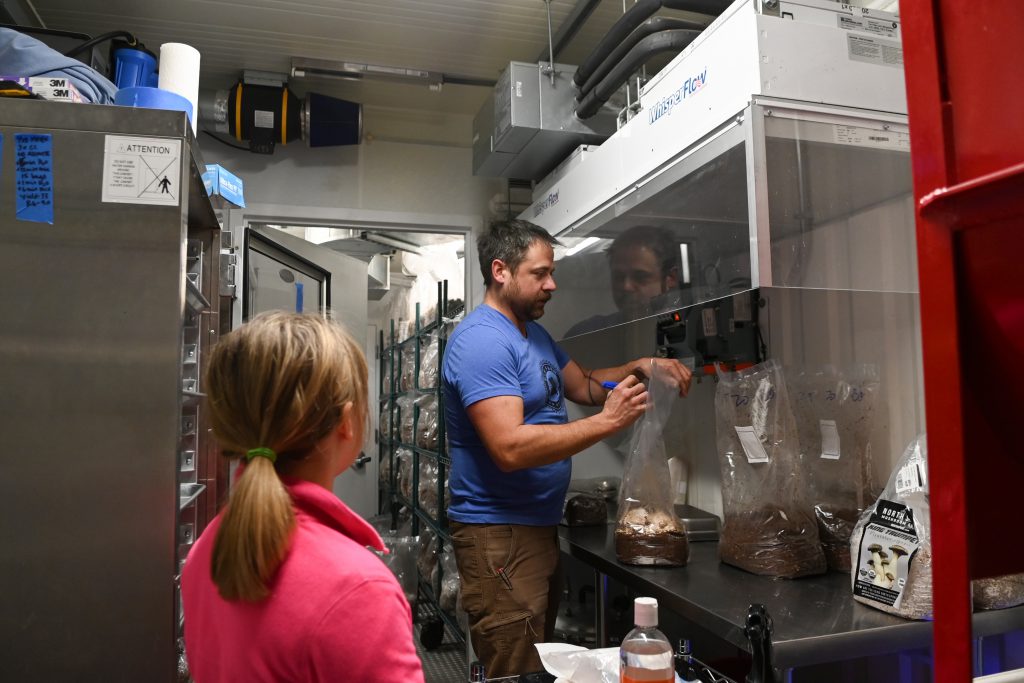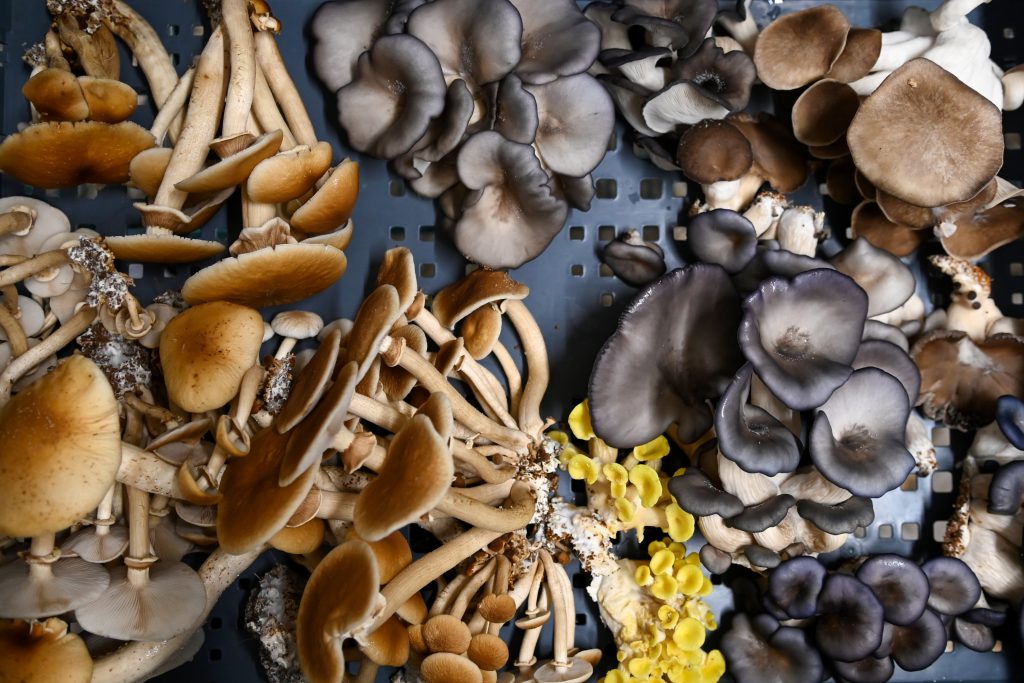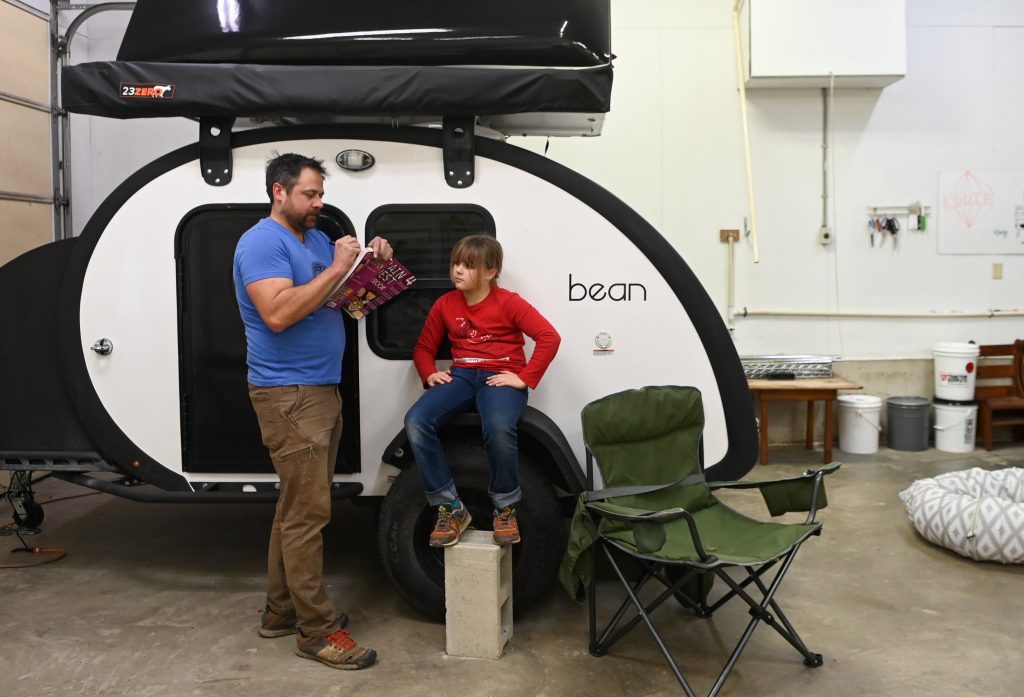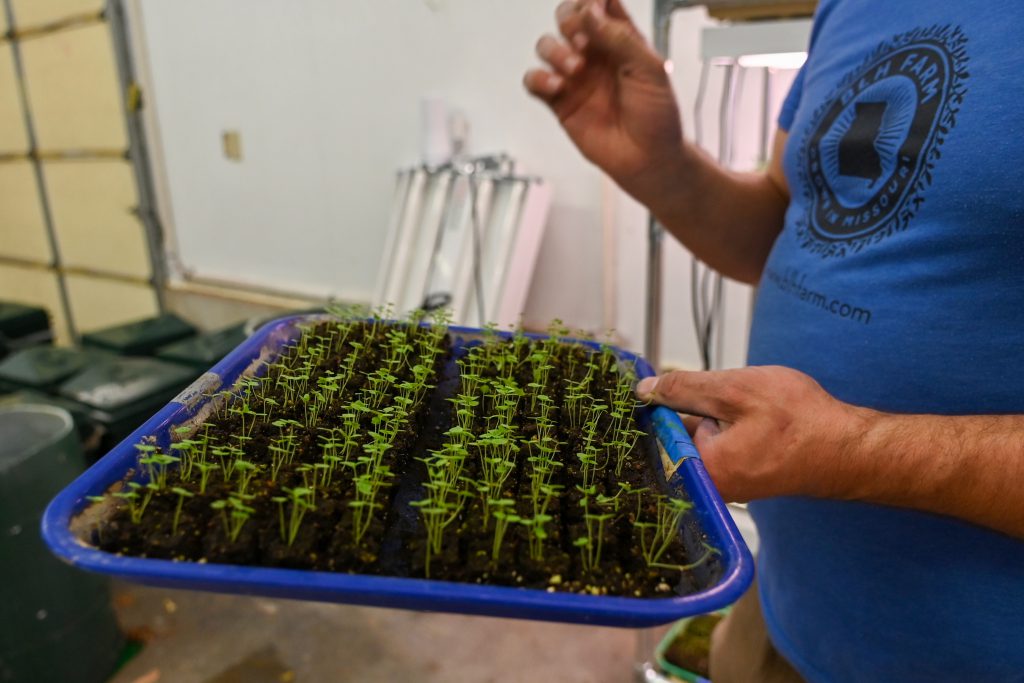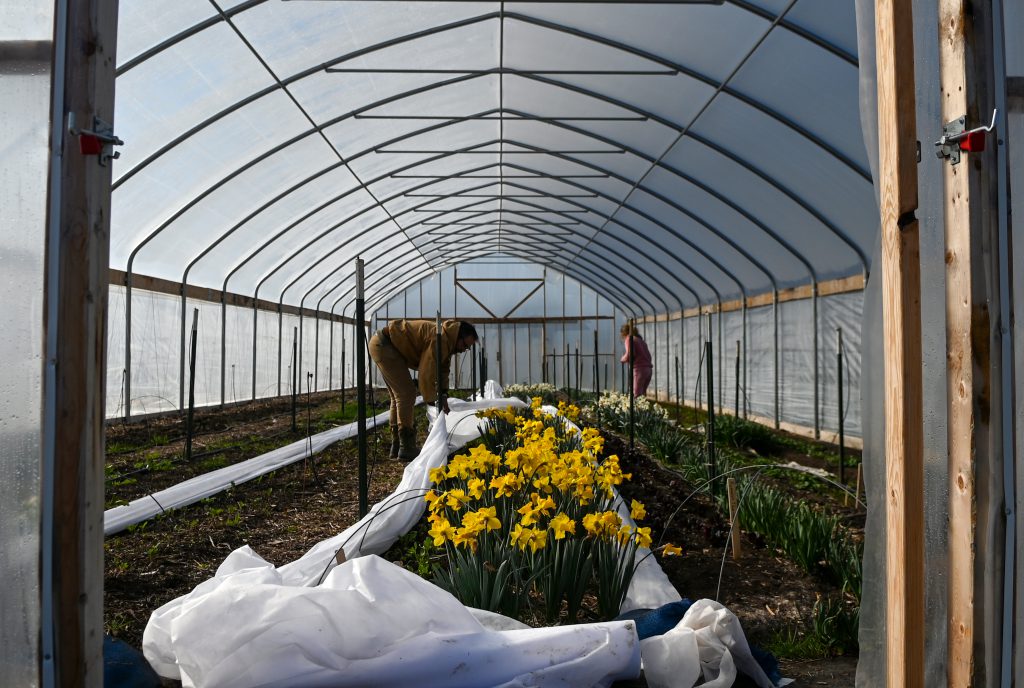Missouri farm embraces regenerative agriculture using mushrooms
Booneslick Heritage Farm uses sustainable farming practices to improve soil health and reduce fertilizer use
Photo essay and story by Maya Bell

FULTON, Mo. – For the first few weeks of 2023, HBO’s The Last of Us suggested that a brain-eating fungus could cause societal collapse. In real life, mushrooms cannot turn people into zombies. To the contrary, they can provide a helpful service.
At Booneslick Heritage Farm, mushrooms are an integral part of the agriculture system. The family-owned flower and vegetable farm in Mid-Missouri uses several regenerative agriculture practices to improve overall soil health and reduce fertilizer use.
Matt Arthur co-owns the farm with his wife Laura Hudson. Booneslick Heritage flowers, mushrooms and vegetables can be found at the Columbia Farmers Market and grocery stores and are available for local delivery. The vegetable and flower operation sits on top of rolling hills in Rocheport, a few miles west of Columbia. The plots include many varieties of perennial and annual flowers, as well as a handful of vegetables. About 30 miles away in Fulton, the couple operates a mushroom-growing facility out of converted shipping containers.
The mushroom operation is key to the whole farm. Once Arthur has harvested and sold the mushrooms, he cycles the remains back into the farm to enrich the soil. The sawdust blocks that grow the mushrooms even get turned into compost once they’re no longer productive for growing.
“We also take the trimmings of the mushrooms, the parts we don’t sell, and feed them to composting worms,” Arthur said.
The worms eat the trimmings and poop out a form of natural fertilizer called worm castings. Arthur uses the castings as a seed starting mix. He says the process helps germination rates in seedlings.
Arthur grew up on a farm and learned from his parents the benefit of minimizing synthetic additive use.
“We always heard about no-till and soil health growing up,” Arthur said. “They always focused on minimizing soil disturbance or being very selective about what sprays they do use and why.”
Arthur applies an organic fertilizer called Dyna Green Nutri-Blend made from a mixture of feather meal, soft rock phosphate, calcium carbonate, alfalfa meal, diatomaceous earth and sulfate potash. While the organic fertilizer aids in plant fertility, he said that he is certain he uses it at a lower rate because of his no-till practices and soil amendments that add carbon to the soil.
“You’re not seeing this boom-and-bust effect of plant fertility because you’re not burning through your carbon stock,” Arthur said.
By practicing these intensive regenerative methods, Arthur hopes to build the health of his plants and soil year by year.
In a video made for the Columbia Farmers Market, Arthur emphasizes the importance of soil health. “Our feeling is, if you’re bringing material from off-farm onto the farm for your operations, it’s not sustainable,” Arthur says in the video. “Overall, we’re just committed to doing as little disturbance of the land as possible.”
This story is part of The Price of Plenty, a special project investigating fertilizer from the University of Florida College of Journalism and Communications and the University of Missouri School of Journalism, supported by the Pulitzer Center’s nationwide Connected Coastlines reporting initiative.
 The Price of Plenty
The Price of Plenty